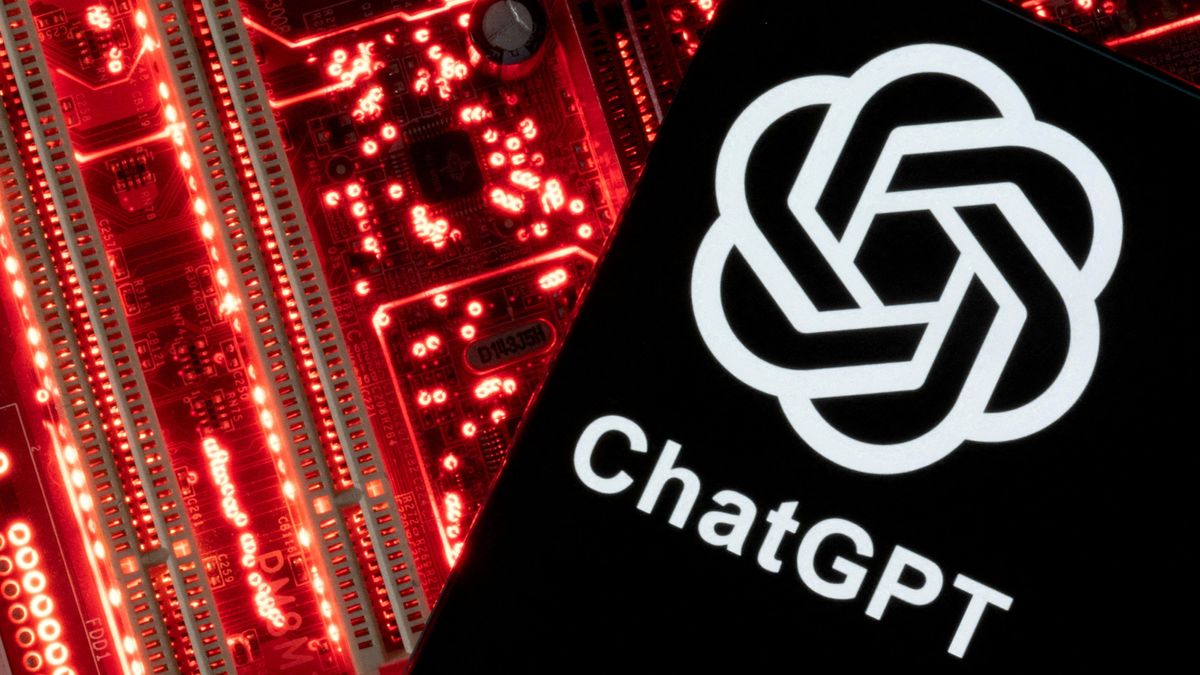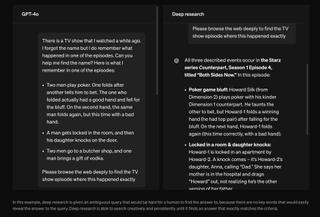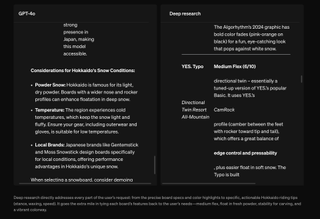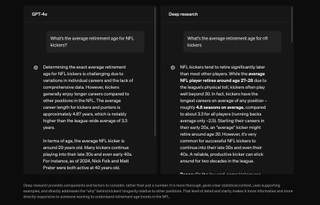OpenAI’s new Deep Research is the ChatGPT AI agent we’ve been waiting for – 3 reasons why I can’t wait to use it
Deep reasoning meets autonomous agency

OpenAI just revealed Deep Research, a new agentic capability in ChatGPT that lets you use AI to compile factual information in minutes, completely opening up new ways to use the world’s most popular chatbot.
In the launch press release, OpenAI claims Deep Research “accomplishes in tens of minutes what would take a human many hours.” Sounds a bit dystopian, right? It's a move closer to a world where we can replace human labor with artificial intelligence. I wouldn’t blame you if the thought of AI compiling research papers and working as an analyst is a step too far, and at first glance, I wasn’t even interested in covering this new functionality as it’s heavily marketed towards businesses, rather than consumers.
That was until I saw OpenAI’s examples of Deep Research’s capabilities in day-to-day tasks, and now I can’t wait to get my hands on the new ChatGPT agent.
So what can Deep Research do?
Deep Research has initially launched for $200 a month ChatGPT Pro subscribers, but OpenAI says the new capability will come to ChatGPT Plus and Team users in the future. At the time of writing, there’s no information on if, or when, Deep Research will become available for free tier users, although OpenAI does a good job at trickling down functionality over time.
OpenAI’s website says, “Deep research is OpenAI's next agent that can do work for you independently – you give it a prompt, and ChatGPT will find, analyze, and synthesize hundreds of online sources to create a comprehensive report at the level of a research analyst.” Think of it as your very own analyst that can go off on its own and report back findings to you in just a few minutes. Whether you need a report on something as niche as the UK’s Hummingbird population, or as per OpenAI’s example, a research report on how the retail industry has transformed in the last three years, Deep Research has you covered.
While the focus here is on compiling reports for businesses, medical research, and other professional use cases, it’s OpenAI’s three examples of what Deep Research can do for the average consumer that makes me incredibly excited to give the new functionality a try:
1. Needle in a Haystack

This Deep Research example is probably my favorite of the three I’m going to discuss on this list. Do you always struggle to find movie names, songs, or any other random tidbits of information that should be easy to remember? Well, ChatGPT’s Deep Research could become your go-to AI tool.
Get daily insight, inspiration and deals in your inbox
Sign up for breaking news, reviews, opinion, top tech deals, and more.
Here, ChatGPT is given a rundown of a TV show with examples of a couple of episodes that the user can remember. One of the episodes has two men playing poker, two men getting locked in a room, and two men going to a butcher shop, with one bringing a gift of vodka. If you were to write this prompt to ChatGPT 4o, it would try to come back with the right answer, but more times than not it would miss the mark due to its lack of research. With Deep Research, not only is the AI agent able to find the exact TV episode you’re referring to but also gives you a breakdown of the details. In this example, the TV show is Counterpart and the scenes are found in Season 1, Episode 4. Just the ability to break down your prompt and research enough information to not only find an answer but give in-depth detail is something that we wouldn’t have thought possible just a few years ago.
If you’re anything like me, this Deep Research functionality might become your new favorite way to use ChatGPT, and it should mean you never struggle to find that name on the tip of your tongue again.
2. Shopping

TechRadar provides awesome shopping advice when it comes to tech, but there are times when my colleagues and I just don’t have the expertise. Take finding the perfect snowboard for your next trip, for example, wouldn’t it be great if you could ask AI to compile in-depth research to help make that purchasing decision a breeze based on your needs? Well, Deep Research can, and it’s seriously impressive.
In the example given, a quick prompt with information about a snowboard, slope conditions, and the area you’ll be snowboarding on, leads to an impressive response that not only gives some of the best options but also goes into detail about why these options are worth exploring. The agent takes on board all of the user’s requests and provides purchasing information that would otherwise take hours to compile yourself.
3. General Knowledge

Deep Research gives more in-depth answers that should be more reliable thanks to the heavy amount of research that goes into giving a response. OpenAI gives a great example of asking “What’s the average retirement age for NFL kickers?” and showcases the difference between 4o and Deep Research with the results.
4o gives a sort of answer that deems the prompt too difficult to give an exact average. The model responds with a rough estimate of “between 35 and 40 years old”, although compared to Deep Research’s in-depth analysis it’s nowhere near as conclusive.
Deep Research, on the other hand, dives deep into multiple sources and compiles factual information to determine that NFL kickers can retire at multiple ages and explains the range of retirement ages with examples. It’s a far more reliable answer and goes to show just how much Deep Research can improve responses when it comes to seeking answers using AI.
While we don’t know exactly when Deep Research will be available for those of us who don’t pay for ChatGPT’s most premium tier, these examples are enough to get me excited about the future of ChatGPT and what it’s going to bring to the masses.
You may also like

John-Anthony Disotto is TechRadar's Senior Writer, AI, bringing you the latest news on, and comprehensive coverage of, tech's biggest buzzword. An expert on all things Apple, he was previously iMore's How To Editor, and has a monthly column in MacFormat. He's based in Edinburgh, Scotland, where he worked for Apple as a technician focused on iOS and iPhone repairs at the Genius Bar. John-Anthony has used the Apple ecosystem for over a decade, and is an award-winning journalist with years of experience in editorial.
You must confirm your public display name before commenting
Please logout and then login again, you will then be prompted to enter your display name.
Most Popular


